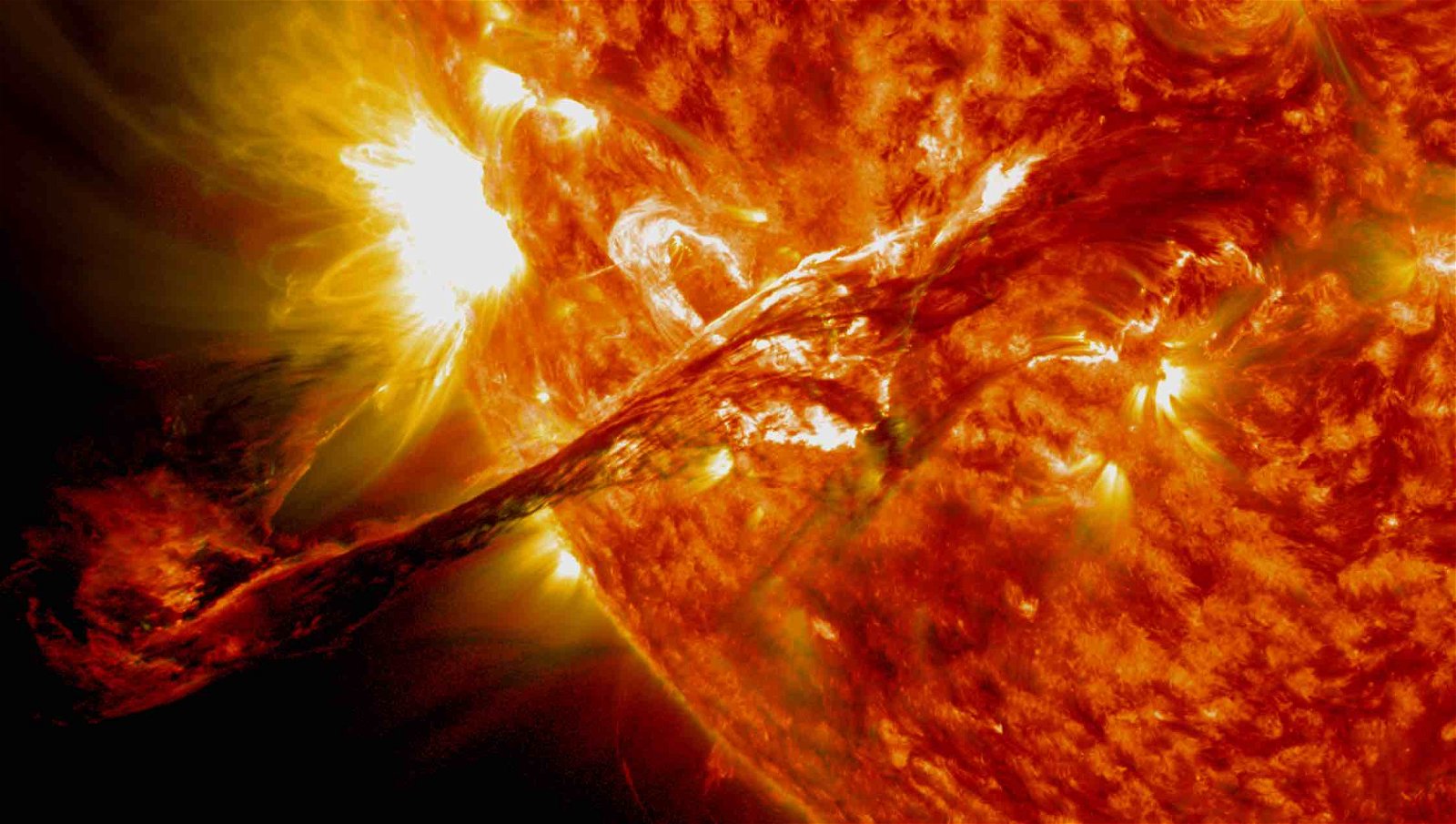The longstanding mystery of why the Sun’s corona is several times hotter than its surface may have finally been solved.
New research has revealed key insights into how kinetic Alfvén waves (KAWs), a type of low-frequency plasma wave whose ions oscillate due to tensions on magnetic field lines, transform into heat as they leave the Sun.
How Can the Sun’s Corona be Hotter Than its Surface?
“For decades, Alfvén waves have been proven to be the best candidates for transporting energy from one place to another,” said Syed Ayaz, a graduate research assistant at the University of Alabama in Huntsville (UAH) Center for Space Plasma and Aeronomic Research (CSPAR), who made the discovery and detailed his findings in a new paper.
“This paper utilizes a novel approach to model energetic particles in space plasmas, as observed by satellites like Viking and Freja, to answer how the electromagnetic energy of the waves, interacting with particles, transforms into heat during the damping process as the waves move through space,” Ayaz said.
“Our investigation explores the perturbed electromagnetic fields, Poynting flux vector, and the power delivery rate of KAWs in the solar atmosphere,” Ayaz added.
“One reason Syed’s work is important is because we still do not understand why the atmosphere of the Sun is more than one million degrees, compared to the surface of the Sun that is a comparatively cool 6,500 degrees,” said Dr. Gary Zank, CSPAR director and the Aerojet Rocketdyne chair of the UAH Department of Space Science, who offered further context for Ayaz’s work in a statement accompanying the release of the study.
Probing the Sun’s Mysteries
Modern investigations of the corona include the Parker Solar Probe mission launched in 2018. The probe, whose mission is ongoing, currently holds the record for attaining the closest proximity to the Sun of any man-made object. Parker will investigate the structure and dynamics of the Sun’s coronal plasma and magnetic field, as well as the energy flow generating the intense heat found in the corona.
While it has transmitted a great deal of information back to Earth already, a number of intriguing questions remain.
“My primary interest in these waves was sparked by the launches of the Parker Solar Probe and Solar Orbiter missions, which raised the crucial question of how the solar corona is heated,” Ayaz said, referencing how the Parker probe inspired his work.
“So far, no spacecraft mission has provided predictions regarding these phenomena close to the Sun, specifically, within the 0 – 10 solar radii range. Our primary focus is to investigate heating by KAWs within these ranges in the solar corona,” Ayaz said.
Using Models to Unravel Coronal Heating
Ayaz and the team generated detailed models of KAWs based on both lab work and space observations. They looked to prior research involving KAWs, which calls back to work performed on the Large Plasma Device (LAPD) at the University of California, Los Angeles, in 1989.
“We focused on the heating and energy exchange facilitated by KAWs,” Ayaz said in a recent statement. “The reason for the great interest in these waves lies in their ability to transport energy. Observational data from numerous spacecraft and theoretical investigations have consistently demonstrated that KAWs dissipate and contribute to solar coronal heating during their propagation in space.”
In studying the waves at the highest level of detail, they dialed in on energy exchanges occurring between the electromagnetic fields and plasma particles. “KAWs operate on small kinetic scales and are capable of supporting parallel electric and magnetic field fluctuations, enabling an energy transfer between the wave field and plasma particles through a phenomenon called Landau interactions,” Ayaz said. He adds that they found the Landau interactions to create a heating effect as the energy transfer accelerated the particles.
Future Research on KAWs
The research conducted by Ayaz and the team was narrow in scope, as it delved into the small scale of KAWs. Future research building on their findings may broaden their applicability to other problems. According to the study, their work promises “to advance our knowledge of KAWs in solar coronal plasmas,” and in the years ahead, could set the stage for a more complete understanding of wave-plasma interactions that occur in space.
Ayaz’s paper, “Solar Coronal Heating by Kinetic Alfvén Waves,” was published in The Astrophysical Journal on July 26, 2024.
Ryan Whalen covers science and technology for The Debrief. He holds a BA in History and a Master of Library and Information Science with a certificate in Data Science. He can be contacted at ryan@thedebrief.org, and follow him on Twitter @mdntwvlf.

